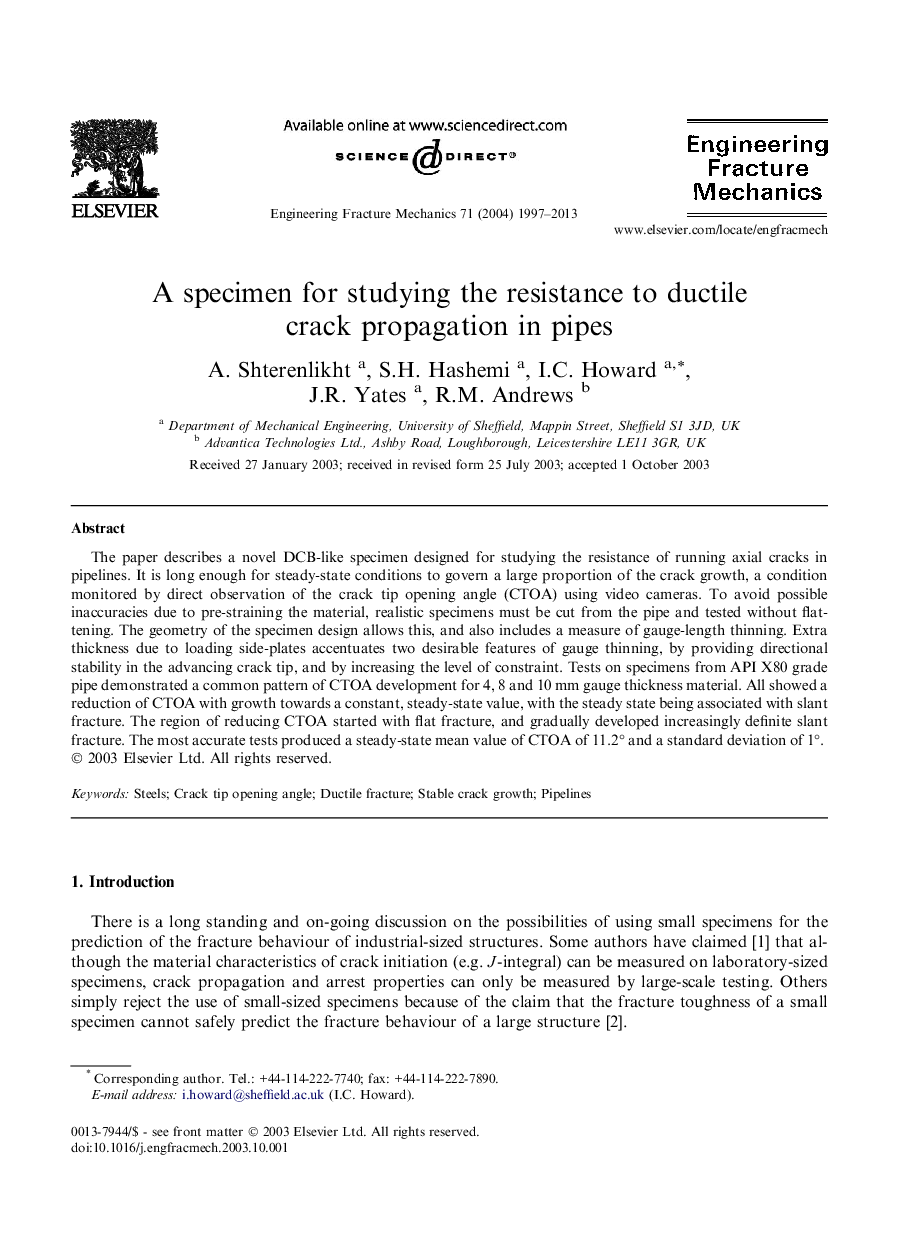| Article ID | Journal | Published Year | Pages | File Type |
|---|---|---|---|---|
| 768787 | Engineering Fracture Mechanics | 2013 | 17 Pages |
The paper describes a novel DCB-like specimen designed for studying the resistance of running axial cracks in pipelines. It is long enough for steady-state conditions to govern a large proportion of the crack growth, a condition monitored by direct observation of the crack tip opening angle (CTOA) using video cameras. To avoid possible inaccuracies due to pre-straining the material, realistic specimens must be cut from the pipe and tested without flattening. The geometry of the specimen design allows this, and also includes a measure of gauge-length thinning. Extra thickness due to loading side-plates accentuates two desirable features of gauge thinning, by providing directional stability in the advancing crack tip, and by increasing the level of constraint. Tests on specimens from API X80 grade pipe demonstrated a common pattern of CTOA development for 4, 8 and 10 mm gauge thickness material. All showed a reduction of CTOA with growth towards a constant, steady-state value, with the steady state being associated with slant fracture. The region of reducing CTOA started with flat fracture, and gradually developed increasingly definite slant fracture. The most accurate tests produced a steady-state mean value of CTOA of 11.2° and a standard deviation of 1°.
